For the first time, the Terracotta Army of the First Emperor are here in our urban jungle, together with the smaller terracotta warriors of the Han dynasty. The 120 objects from the Mausoleum of the First Qin Emperor, and 20 terracotta warriors, had made their way around the world, from China to UK, America, Canada, Sweden, etc. I remember seeing hordes of people, queuing, paying top dollars, to get the glimpse of these legendary warriors in the British Museum, London, back in 2008.
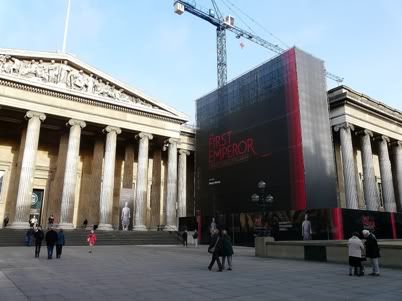
 And some attempted to make some terracotta warriors as well...
And some attempted to make some terracotta warriors as well...
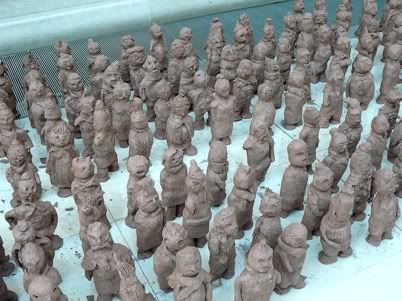 Now in Singapore, we only have to pay a reasonable entrance fee (discount with PAssion Card or IKEA card!) to see them!
Now in Singapore, we only have to pay a reasonable entrance fee (discount with PAssion Card or IKEA card!) to see them!
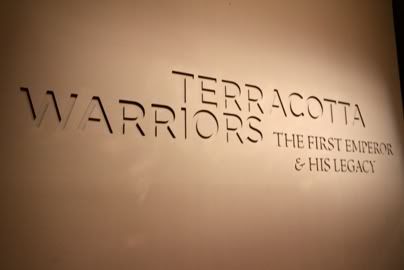 The artifacts on display is a very small part of the 8,000 soldiers, 130 chariots with 520 horses and 150 cavalry horses in the pits of the mausoleum, in Xi'an, China. It featured the important bronzes and jades from the Qin state before the time of the First Emperor. The terracotta figures from the Han dynasty was also on display. The highlights were the actual terracotta warriors, the new interpretations and questions of the army.
The artifacts on display is a very small part of the 8,000 soldiers, 130 chariots with 520 horses and 150 cavalry horses in the pits of the mausoleum, in Xi'an, China. It featured the important bronzes and jades from the Qin state before the time of the First Emperor. The terracotta figures from the Han dynasty was also on display. The highlights were the actual terracotta warriors, the new interpretations and questions of the army.
One thing that truly amazed me is the scale of construction of these figures. An army of various ranks and duties, each constructed with unique details, so as to accompany the Emperor in his afterlife. At the hallway to the exhibition was model of the construction process.
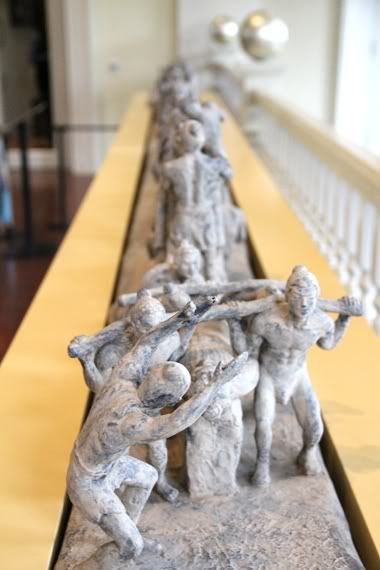 The bronze bell dedicated to Duke Wu, from the Spring and Autumn period (770-476 BCE), greeted everyone at the start of the exhibition.
The bronze bell dedicated to Duke Wu, from the Spring and Autumn period (770-476 BCE), greeted everyone at the start of the exhibition.
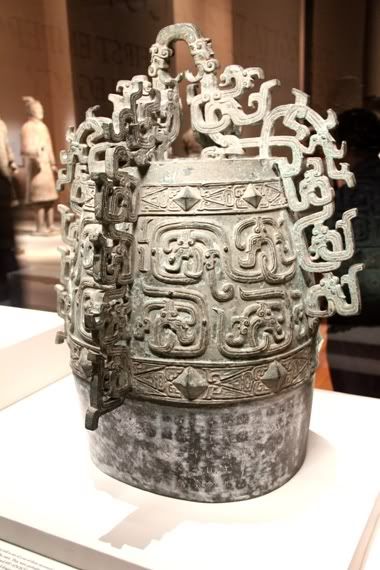 An owl-shaped jade pendant from the same period, Shang Guo Dian village, in Feng Xiang. The owl has always been connected with bravery and wisdom.
An owl-shaped jade pendant from the same period, Shang Guo Dian village, in Feng Xiang. The owl has always been connected with bravery and wisdom.
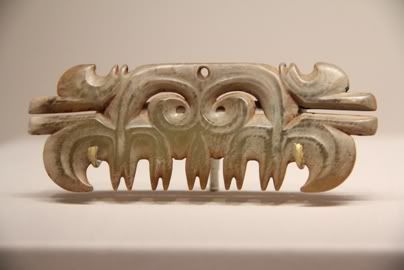 Iron sword with gold and turquoise handle, from the same period as well.
Iron sword with gold and turquoise handle, from the same period as well.
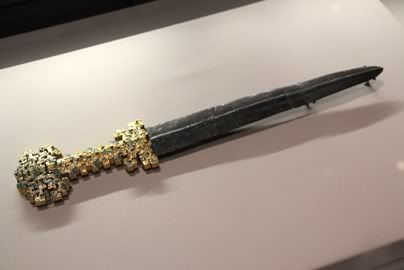 This is probably some sort of incense burner... aroma therapy of the ancient China.
This is probably some sort of incense burner... aroma therapy of the ancient China.
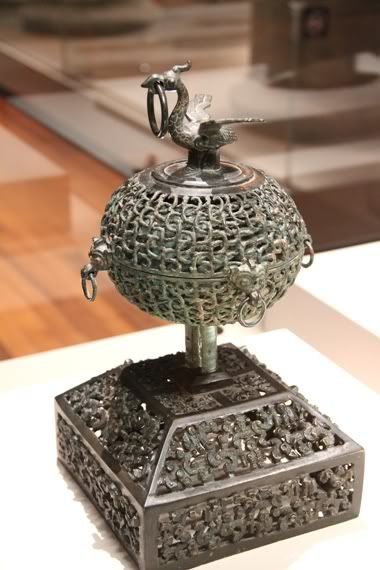 A replica of the bronze chariot for the Emperor.
A replica of the bronze chariot for the Emperor.
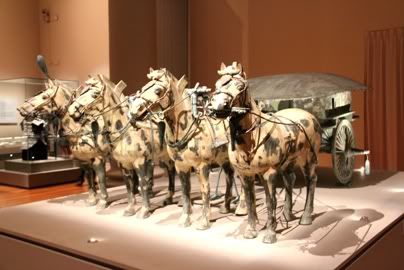 Wife not included, each sold separately. :p
Wife not included, each sold separately. :p
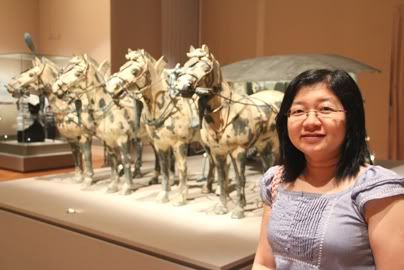 Some of the smaller pieces on display...
Some of the smaller pieces on display...
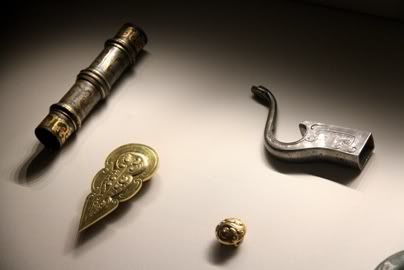 View of an official's seal through the magnifying glass...
View of an official's seal through the magnifying glass...
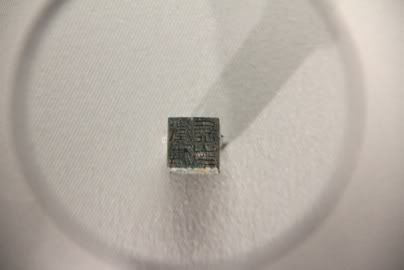 A headless strongman, his task was to entertain the Emperor in his afterlife.
A headless strongman, his task was to entertain the Emperor in his afterlife.
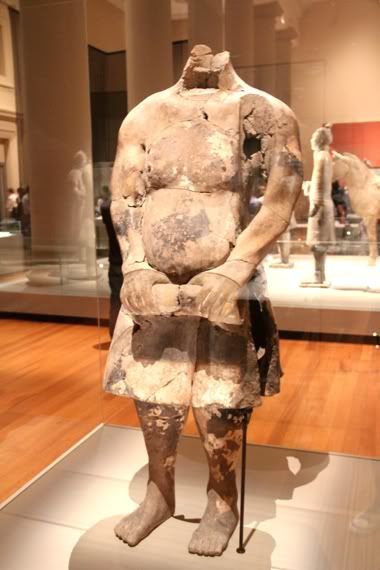 The General and his merry men.
The General and his merry men.
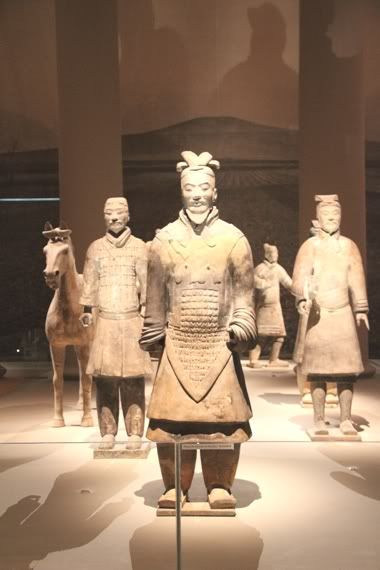 From the position of his legs, we can tell that this is an archer.
From the position of his legs, we can tell that this is an archer.
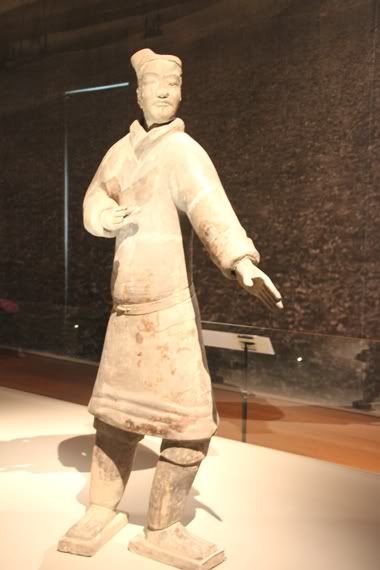 Closer look at the General (221-206 BCE) who commanded the soldiers in the tomb. His identity is revealed by his headdress and body armour.
Closer look at the General (221-206 BCE) who commanded the soldiers in the tomb. His identity is revealed by his headdress and body armour.
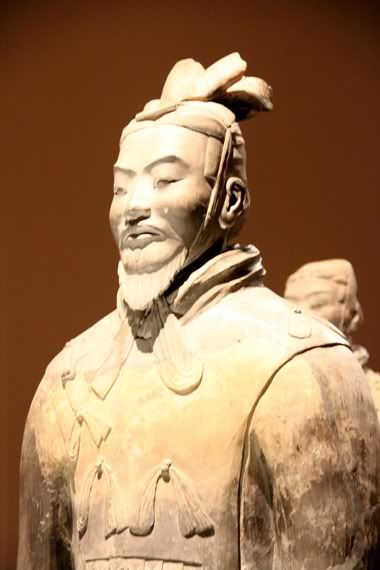 It was my honour to take a photograph with him.
It was my honour to take a photograph with him.
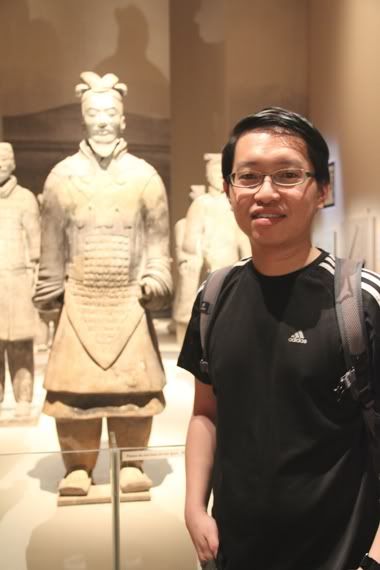 Some fine details in the sole of the warrior's shoe.
Some fine details in the sole of the warrior's shoe.
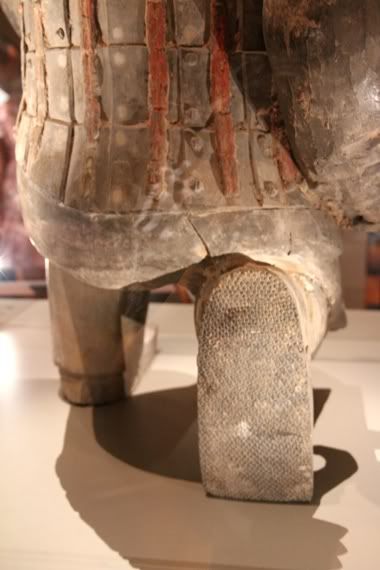 A pair of shallow shoes help the soldiers to maneuver easily at the front-lines.
A pair of shallow shoes help the soldiers to maneuver easily at the front-lines.
 A cavalryman and his mount. Care was taken to ensure the four legs of the horse landed at the same time during transportation, due to its weight.
A cavalryman and his mount. Care was taken to ensure the four legs of the horse landed at the same time during transportation, due to its weight.
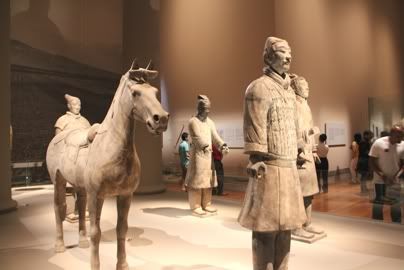 The squatting archer reloads his arrows, as his comrades fire a few rounds over his head. Noticed the red paint on him?
The squatting archer reloads his arrows, as his comrades fire a few rounds over his head. Noticed the red paint on him?
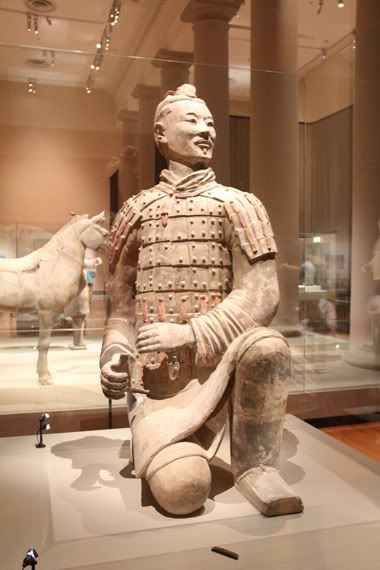 More painted terracotta figures from the Han dynasty.
More painted terracotta figures from the Han dynasty.
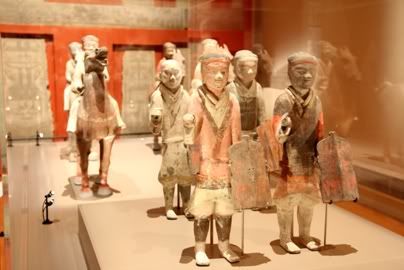
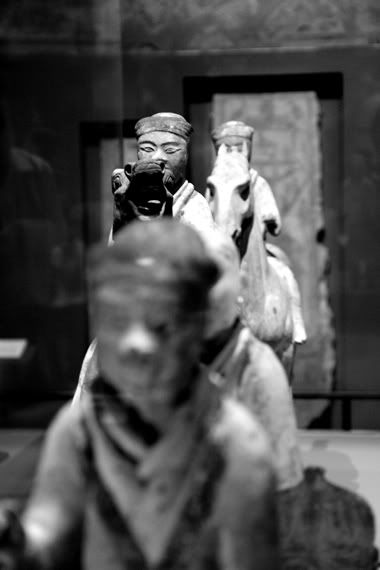 Jade farm animals were popular items that were buried during the Han dynasty - don't want to get hungry in the afterlife?
Jade farm animals were popular items that were buried during the Han dynasty - don't want to get hungry in the afterlife?
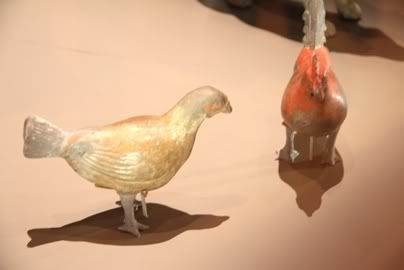 An installation by Justin Lee, accompanies the Terracotta Warriors exhibition. His work blends Western pop art with traditional Eastern imagery, and gives rise to a new reading of work that is a mix of many cultures, and thus decidedly Singaporean. With playful use of colour and light, Justin's works suggest that life after death might not be so bad.
An installation by Justin Lee, accompanies the Terracotta Warriors exhibition. His work blends Western pop art with traditional Eastern imagery, and gives rise to a new reading of work that is a mix of many cultures, and thus decidedly Singaporean. With playful use of colour and light, Justin's works suggest that life after death might not be so bad.
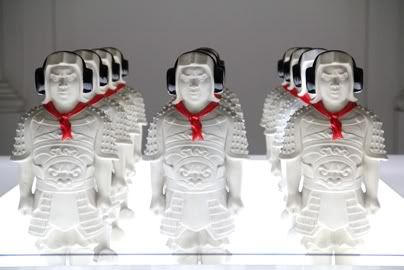
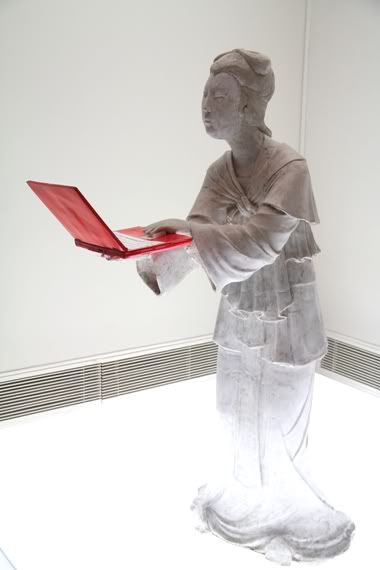 Terracotta Army flanked by graceful fairy-like maidens armed with modern technologies, and motifs which marries the East and West. What are your thoughts?
Terracotta Army flanked by graceful fairy-like maidens armed with modern technologies, and motifs which marries the East and West. What are your thoughts?
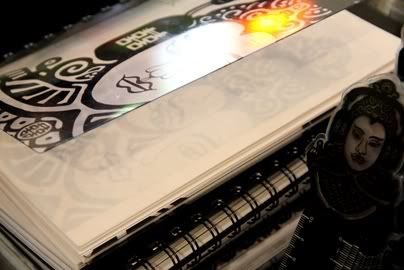 Btw, the exhibition is still on, till 16 Oct 2011. Catch the warriors before they move on to the rest of the world!
Btw, the exhibition is still on, till 16 Oct 2011. Catch the warriors before they move on to the rest of the world!




One thing that truly amazed me is the scale of construction of these figures. An army of various ranks and duties, each constructed with unique details, so as to accompany the Emperor in his afterlife. At the hallway to the exhibition was model of the construction process.
























Comments